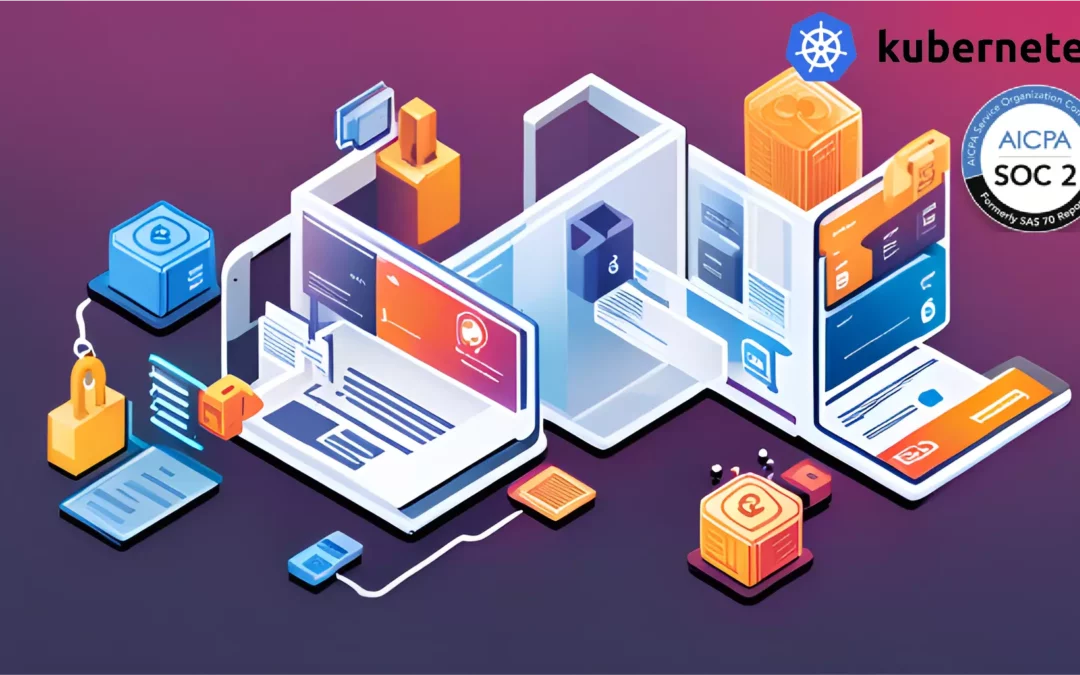In today’s high-tech world, SOC 2 compliance and Kubernetes are quickly becoming crucial for ensuring modern data security and infrastructure management. SOC 2, an auditing standard developed by the American Institute of CPAs, provides customer data protection, privacy, and availability. On the other hand, Kubernetes has emerged as a leading container orchestration platform, enabling efficient management and scaling of applications. Several organizations have begun to leverage Kubernetes to meet SOC 2 compliance requirements. By combining the best practices of SOC 2 and the capabilities of Kubernetes, businesses can enhance data security, achieve regulatory compliance, and build trust with their customers.
Understanding SOC 2 Compliance
SOC 2 compliance is a comprehensive framework focusing on security, availability, processing integrity, confidentiality, and data privacy. It provides a set of standards and guidelines for organizations to assess and demonstrate their commitment to safeguarding customer information.
However, SOC 2 compliance goes beyond checkbox requirements. It requires organizations to establish robust policies, procedures, and controls to protect data throughout its lifecycle. By achieving SOC 2 compliance, businesses can assure customers they’re handling their data securely and confidentially. It also helps organizations build trust, gain a competitive edge, and meet the increasing regulatory compliance demands in today’s data-driven landscape.
SOC 2 Compliance Requirements
To achieve SOC 2 compliance, organizations must adhere to specific requirements. These requirements encompass various aspects of data security, availability, processing integrity, confidentiality, and privacy.
Essential SOC 2 compliance requirements include:
- Establishing and implementing policies and procedures that address these areas
- Conducting regular risk assessments
- Implementing access controls and encryption measures
- Monitoring system activity
- Maintaining comprehensive audit trails
Additionally, organizations must undergo periodic audits by independent auditors to assess their compliance efforts. By meeting these requirements, organizations demonstrate their commitment to protecting customer data and ensuring the integrity and security of their systems and processes.
Leveraging Kubernetes for SOC 2 Compliance
Kubernetes provides organizations with a powerful platform for achieving SOC 2 compliance. Its container orchestration capabilities contribute to securing and isolating sensitive data. Kubernetes also offers robust access controls, encryption options, and auditing mechanisms that align with SOC 2 compliance requirements.
By utilizing Kubernetes, organizations can implement fine-grained access controls to protect data, encrypt communication channels, and track and monitor activities within the containerized environment. Additionally, Kubernetes enables efficient scaling and high availability, ensuring the continuous availability of systems and services. Thus, leveraging Kubernetes empowers organizations to enhance their SOC 2 compliance efforts while benefiting from the flexibility and scalability of containerized applications.
Organizations employ ISO 27001 to systematically identify, assess, and manage information security risks in Kubernetes environments. They can also rely on it to define and implement Kubernetes-specific security controls, policies, and procedures. The standard promotes security measures that adhere to industry best practices and regulatory requirements.
SOC 2 Compliance Software
For organizations new to SOC 2, SOC 2 compliance software simplifies and streamlines the compliance process. This specialized software offers a range of features and functionalities to help organizations meet SOC 2 requirements efficiently. It also automates risk assessment, policy management, incident response, and documentation, saving valuable time and resources.
Additionally, SOC 2 compliance software provides centralized visibility and control, allowing organizations to monitor compliance status, track remediation efforts, and generate comprehensive reports for audits. With the help of SOC 2 compliance software, businesses can effectively navigate the complexities of compliance, ensuring they meet the necessary standards and effectively maintain data security and privacy.
SOC 2 Compliance Automation
Automation plays a crucial role in achieving and maintaining SOC 2 compliance efficiently. Organizations can streamline various compliance processes by leveraging automation tools and technologies, improving accuracy and efficiency. They can also employ automation for vulnerability scanning, log management, access control enforcement, and reporting. This approach enables organizations to promptly identify and address potential security gaps, automate security controls, and generate real-time compliance reports.
Automation reduces the risk of human error and ensures consistent application of compliance measures across the organization. By embracing SOC 2 compliance automation, businesses can effectively manage their compliance requirements, enhance their security posture, and focus more on strategic initiatives.
Best Practices for SOC 2 Compliance in Kubernetes
To ensure SOC 2 compliance in Kubernetes, organizations should implement secure configurations by employing strong authentication, RBAC (Role-Based Access Control), and network policies. Regularly updating and patching Kubernetes components is essential to mitigate vulnerabilities. In addition, encryption should be applied to data in transit and at rest.
Conducting regular audits and assessments helps maintain compliance and identify areas for improvement. Implementing robust logging and monitoring systems helps threat detection. Employee education and training on security best practices are crucial. Additionally, performing regular penetration testing helps identify vulnerabilities and validate security measures. Following these best practices strengthens SOC 2 compliance in Kubernetes deployments, bolstering data security and regulatory adherence.
A New Era for Customer Data Protection
The intersection of SOC 2 compliance and Kubernetes allows organizations to enhance data security, achieve regulatory compliance, and build customer trust. By understanding the requirements of SOC 2 compliance and leveraging the capabilities of Kubernetes, businesses can establish robust policies, implement access controls, encrypt data, and automate compliance processes. SOC 2 compliance software further streamlines the compliance journey by centralizing monitoring and reporting. Embracing SOC 2 compliance automation also helps, reducing human error and ensuring consistency in compliance efforts.
Finally, following best practices, such as secure configurations, regular audits, and employee training, is essential. When organizations employ best practices, they’re better prepared to navigate the complexities of SOC 2 compliance in Kubernetes deployments. Best practices also provide organizations with a solid foundation for fostering a data protection culture and maintaining a competitive edge in the market.
